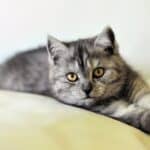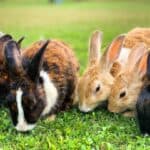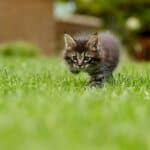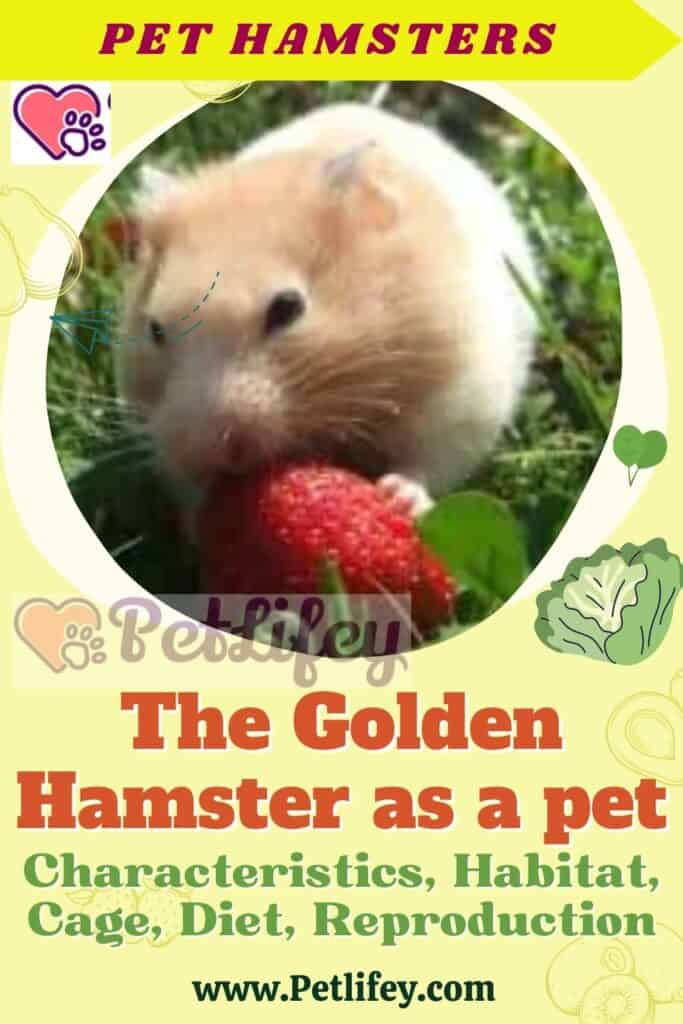
Golden Hamster is the most common among domestic hamsters. It is a nocturnal and solitary animal, but suitable for children
The golden hamster is part of the rodent family, is perhaps the most common species among hamsters and is one of the largest specimens. It is a sociable pet particularly suitable for families with children and it is not difficult to take care of in full respect of its needs and habits of life.
n nature, the golden hamster is a solitary animal and also somewhat aggressive towards enemies. Today it is considered a pet , a sweet and nice pet , but in reality it is a pet that demands respect and privacy .
Let’s get to know this small pet rodent better.
Golden hamster: characteristics
The golden hamster – scientific name Mesocricetus auratus – belongs to the rodent family. It has origins in the desert, arid and temperate regions of Asia Minor.
- The golden hamster is first of all a rodent and is therefore endowed with continuously growing incisor teeth, which it keeps of constant length with consumption, gnawing!
- Its coat can be of many colors and shades from white to cream, from brown to gray to black. There are short-haired and long-haired varieties, rarer and more delicate than the former.
- They are 13-15 cm long on average.
- They weigh on average between 80 and 130 grams. The female is larger than the male.
- The tail is small, around one centimeter in length.
- The lower part of the legs is devoid of hair and has pads
- On each flank the males have a gland, much more developed than the female, covered with hair. The gland secretes a liquid which is used by the rodent to mark the territory. If the hair above the gland appears wet, it means that the hamster has come into contact with a female ready to mate.
How Golden Hamster lives, habits
Golden hamsters live an average of two to three years, but they can live even longer if well cared for.
- This rodent is a solitary animal : it appears sweet and affectionate but in reality it is used to living alone in nature and does not want its fellow humans nearby. Indeed, in the presence of another specimen of its species, the golden hamster attacks and bitterly defends its solitude.
Only during the mating does this animal accept the presence of another hamster in its den, but immediately after reproduction the two immediately separate and must be divided. The female will provide in solitude to raise her young.
- The golden hamster is a nocturnal animal : during the day it therefore mostly sleeps safely in its lair, while at night it goes out to look for food and carries it to its lair. It does this all night, even covering long distances.
The food he finds he inserts into the two large cheek pockets, which allow him to carry the food to the den. In captivity its nocturnal activity can vary and be limited to its den where it will move energetically, playing and in any case carrying food.
- He stands out as a skilled digger: he manages to build deep underground dens composed of numerous tunnels and rooms where he will shelter and where he will hide the food found at night.
Golden hamster: how to prepare its cage
If you decide to keep a golden hamster at home, you must first of all organize his den well, which must feel safe, spacious and comfortable otherwise he will always try to escape.
Ideal for the hamster are the cages formed by several floors, with ladders and tunnels and the wheel … which allows them to move freely and take many steps. In nature, the golden hamster travels a lot in the desert. Inside the cage it is therefore advisable to insert various branches on which to climb, twigs to gnaw, thus allowing the hamster to do activities and keep him busy.
It is also important to insert in the cage a small house or a box that constitutes the shelter of the pet. Leaving at its disposal within the cage of hay, pellets of corn cobs, recycled paper pellets, wood chips, paper cut up the hamster can build his lair.
On the walls of the cage there must be a drip drinking bottle that always supplies clean water. The water must be changed every day .
Hamsters always do their needs in the same place: it is therefore advisable, once the place has been identified, to insert a small container of absorbent material thus facilitating cleaning of the cage.
The cage must also be lined with cloths: possibly use old sheets or t-shirts that will offer warmth to the golden hamster during the winter. Only use materials that they can break up and swallow because they are still rodents.
Be careful to insert only safe items into the cage. To avoid painted or toxic objects, and substances that if swallowed are not digestible and can therefore cause intestinal obstruction. Any heavy objects that could hurt the hamster.
Where to place the cage of Golden Hamster
The cage should be placed in a quiet and peaceful area.
It must be away from drafts, away from a window, away from direct sun or a radiator.
Hygiene of the cage for Golden Hamster
Maintaining the hygiene of the cage is a good habit.
- Once a week all the accessories contained in the cage must be cleaned: to clean them simply use warm water and soap, rubbing well with a brush and then rinse carefully.
- Every day, on the other hand, it is necessary to provide for daily cleaning: eliminate the remains of food, change the water in the drinking bottle and clean the area where it goes to make needs.
Golden Hamster: social life
Hamsters are antisocial animals in nature, they mark their territory that they defend even with fierce fights and do not tolerate the presence of their own kind. They do not suffer from loneliness, on the contrary, it is essential that there is only one golden hamster in each cage, otherwise a fight would start until the death of one of the two specimens.
If you keep other pets such as cats and dogs in the house , make sure your hamster cage is safe. It is not enough for it to be closed because they could knock it over and scare the hamster with their presence.
Golden Hamster : diet
Hamsters are omnivorous in nature so they feed on both vegetables such as plants and tubers and fruit and on animal foods such as some insects, but above all they are granivorous, they love to eat seeds.
To live long and healthy even the golden hamster needs a correct diet that is varied and balanced that is not limited to a single food.
In captivity it is advisable to feed the golden hamster both with packaged products suitably designed for them and with fresh products.
Packaged food
Prepared foods for hamsters contain both vegetable proteins, animal proteins and fats.
The ideal food is the so-called pellet feed .
Seed mixes are also available but these should be given as a snack occasionally not as a single meal. In fact, the seed sticks are rich in molasses and are to be avoided due to the excessive sugar and fat content, which are harmful to the health of the hamster.
A golden hamster consumes about 12 grams of food a day, especially at night: it is the habit of this pet to eat small but frequent meals, so they must always have food available. Even if they do not eat it immediately, it is their nature to accumulate food supplies in the den.
Fresh food
It is advisable to supplement the prepared diet with a small amount of fresh food, in particular:
- animal proteins such as boiled egg, cooked lean meat, oil-free tuna, fresh cheese, yogurt
- carbohydrates: cooked pasta, wholemeal bread or rusks, cereals
- fruit that is nutritious and greedy for them, but with caution because it can have a laxative effect.
It is also recommended to give the hamster some food to gnaw to prevent his teeth from becoming very long: for example dog biscuits, dry whole wheat pasta.
Contraindicated foods
Their can therefore be varied but there are some foods that are absolutely contraindicated, such as:
- sunflower seeds, too fat
- sweets, biscuits, creams, sweets, too sugary
- fried and snacks, too much fat
- sausages
- non-edible vegetables
- chocolate
- milk and its derivatives
Golden hamsters: how they reproduce
Golden hamsters can reproduce all year round and reach sexual maturity at 32-42 days. Mating usually takes place around 2-3 months of age.
After mating, the female and the cubs in the wild go away in solitude and the male must be immediately removed.
The female becomes very aggressive and territorial and could even kill the male.
Pregnancy and weaning
Pregnancy lasts 16 days. The female must have plenty of nesting material and a sufficient supply of food.
The births are on average 5-9 and should not be touched for the first seven days of life: the mother should not be touched and not even the cage should be cleaned during these first days. The female can also be aggressive towards her own young.
If they are frightened, the females could put the young in the cheek pockets thinking of protecting them but they can suffocate them.
The young are completely inept at birth, naked and with their eyes closed, but they already have the incisors. Weaning occurs at 20-25 days. After this period, the babies must be separated and housed individually to avoid pregnancies and fights.
Hamsters do not need to be vaccinated, but a visit to the vet 2-3 times a year is recommended.
Golden Hamster : Personality
Golden hamsters are generally docile but can also be aggressive and biting. It depends a lot on their nature but also on how they were treated in the first days of life and if they were immediately used to the hand of man.
The golden hamster still makes a great cute, sweet, and active pet. Docile subjects can also be held in the hand.
In order for the hamster to remain docile it is advisable to take it in your hand every day for a few minutes but be careful: not taking a hamster that is sleeping could react aggressively and bite.
The golden hamster and children
Children need to be taught how to handle and care for this pet that has a somewhat peculiar character. Caring for a golden hamster means respecting its natural habits.
Children must be taught
- to have respect for their lonely soul,
- not to feed them improvised food,
- not to wake him if he sleeps,
- not to kiss him to avoid getting bitten in the face,
- to wash your hands thoroughly after handling it.
Golden hamster: Interesting Facts
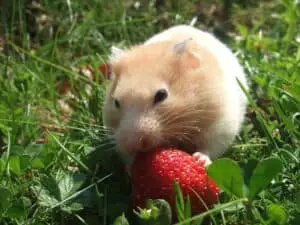
- Wild golden hamsters are native to Syria but are very rare today: they are considered to be among the endangered species and have been listed by the World Union for Conservation of Nature as vulnerable to extinction.
- They have four toes on their front legs, and five on their hind legs.
- Their litters are often numerous: the largest litter was over 20 puppies!
- Hamsters are intelligent and can also remember their relatives.
- They spend the night in activity and travel long distances of up to 10 kilometers!
- These hamsters are also called Teddy Bear or Angora.

